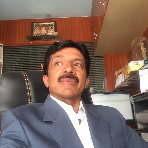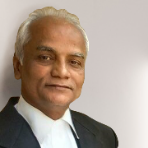75 years of Independence and Evolution of Law: Part 2 (1973 to 1997)
Posted On : August 29, 2022

Table of Contents
The last quarter of the 20th century proved critical for the Indian legal system after independence. Proclamation of national emergency in 1975 gave people of India a new adventure to deal with which was totally beyond expectation. The tug of war among political leaders and damage control by the judiciary was a legit phase to mention while discussing the 75 glorious years of independence. Various instances of empowering freedom of speech were witnessed during these 25 out of 75 years of Indian independence. Know what happened with the law of India during 1973 to 1997. Also explore the legendary cases of Indira Gandhi’s assassination, Indra Sawhney, Maneka Gandhi, etc. that shaped the Indian legal system after independence.
1973 to 1997: Middle Piece of 75 years of Indian Independence Journey
1973: Bennett Coleman[1] is a classic case law of this year which laid the foundation of rights of press under the Article 19 (1) (a) - freedom of speech and expression against any reasonable restrictions. There was another benchmark in the Indian legal system through Kesavananda Bharati case[2] which still remains historic to have a largest bench of 13 Supreme Court judges. The decision clarified that the parliament could amend any part of the Constitution including the fundamental rights provided that the basic structure or the essential features are maintained. The Criminal Procedure Code was also brought in force in the same year that laid the process for criminal cases.
1974: The environment in India got a saviour through the Water (Prevention and Control of Pollution) Act, 1974. The 35th amendment of Constitution of India gave Sikkim the status of an ‘associated state of India’.
1975: This year played a crucial role in empowering the democracy and Indian legal system after independence. The 39th amendment of Indian Constitution sought to keep the Indian judiciary out of range from the elections of constitutional leaders like the President, Vice President, Prime Minister, and the Lok Sabha speaker. The same was challenged before the court by Raj Narain[3] that the said amendment overruled the basic structure theory laid in the case of Kesavanda Bharati[4]. The apex court upheld Raj Narain’s contention and declared clause 4 of Article 329A unconstitutional. Years before the right to information came into existence, another case by Raj Narain led the apex court to include seeking information as part of freedom of expression under Article 19(1)(a) of the Constitution for matters of public interest.
1976: While the whole country was under Emergency orders, this year witnessed enormous changes in the Indian Constitution through its 42nd amendment. It is for this very reason that 42nd amendment is also called a Mini Constitution. Inclusion of fundamental duties, words in the preamble like ‘Socialist, Secular and Integrity’ were some of the many changes brought through this amendment. Cases like Lalai Singh Yadav[5] still managed to uphold the freedom of speech and expression during constitutional emergency when it comes to safeguarding the fundamental rights of the people whereby the state is duty bound to lay the grounds of forfeiture, if any.
1977: This year led to another legal confirmation for ‘President’s satisfaction under Article 356 for state emergency’ that it is challengeable in the court of law in case of State of Rajasthan v. Union of India[6]. The two preceding conditions are that such satisfaction should have violated certain constitutional provisions or mala fide wholly based on extraneous grounds. It proved to be paramount for the Indian legal system after independence.
Also Read - 75 Years of Independence and Evolution of Law - Part 1 (1947 to 1972)
1978: When passport office issued orders of confiscation of her passport without any concrete reason, Maneka Gandhi[7] filed a writ petition alleging that such orders restricted her right to movement and violated fundamental rights under Articles 14, 19(1)(a) & (d) and 21 of the Indian Constitution. This case led to the overturning of A.K. Gopalan’s case[8] and broadening the scope of fundamental rights in India. On the other hand, the 44th amendment of the Constitution introduced some stringent checks before a government announces national emergency which justifies the 75 years of Indian independence, achievements, aspirations and challenges.
1979: This year was important for those who leave their homes, families, hometowns, to earn more in big cities for the sake of survival. The Inter-State Workmen Act regulates the work conditions of inter-state migrant workers in India. The same year, the apex court established the status of Chief Minister of a state in M. Karunanidhi[9] that a CM is a public servant in terms of salary and any other public duties.
1980: As seen in the past years, the tussle of parliamentary powers to amend the Constitution was brought to an end with the Minerva Mills case[10]. The court held that while making any changes in the Constitution, the parliament still has to respect the ambit of amendability as provided in the Constitution of India itself.
1981: This year was a milestone for freedom of expression due to the case of S.P. Gupta[11] which is also famous as the first Judges Transfer case. The Supreme Court rejected the Central government’s reservations in disclosing certain documents corresponding to the appointment and transfer of judges in India. Another benchmark was set for the environment through the Air (Prevention and Control of Pollution) Act, 1981.
1982: In this year, the crucial Power of Attorneys Act was brought in which allows one person to act on behalf of another on certain legal events. To safeguard financial transactions, Chit Fund Act was enforced to regulate chit funds in India. The case of People’s Union (1982)[12] led to the apex court elaborate Article 23 of the Constitution and allowing direct reach of workers to the Supreme Court under Article 32.
1983: The case of D.S. Nakara[13] led to the declaration of a particular pension scheme as unconstitutional since it discriminated against people (public servants) born before a particular date. It has been a landmark for 75 years of independence and evolution of law in India.
1984: Fatal gas leak in Bhopal[14] led to killings of hundreds of innocent people. The Supreme Court made the foreign company pay $470 million for damages. The whole nation was shaken by the assassination of Indira Gandhi by her own security staff.
1985: Shah Bano case[15] is an epic example of upholding welfare through secular laws against religion bound mindset. Maintenance to a 62 year old divorced Muslim woman was granted in this case. Victims of Bhopal gas tragedy got relief through The Bhopal Gas Leak Disaster (Processing of Claims) Act, 1985.
1986: This year, the Supreme Court upheld the fundamental right of religious practices over etiquettes related to the national anthem. The said case was of Bijoe Emmanuel[16] which has been mentioned for understanding essential religious practices in the Karnataka Court’s hijab judgment. The law for consumer protection came into force for the first time which has now been replaced by the Consumer Protection Act, 2019.
1987: The instant case of oleum gas leak from Shriram Foods and Fertilisers[17] led the apex court to recognize the principle of ‘Absolute Liability’. The Goa, Daman and Diu Reorganisation Act, 1987 was introduced for some territorial reorganisation.
1988: This year shook the nation with Indira Gandhi’s murder case[18]. The case proved to be a landmark judgment related to the rights of accused being the rarest of the rare cases. It still remains an iconic case through the 75 years of independence of india. To address increasing instances of corruption in the country, Prevention of Corruption Act was brought in force.
1989: The year confirmed protection of rights of suppressed communities through the Scheduled Castes and the Scheduled Tribes (Prevention of Atrocities) Act, 1989. The case of Parmanand Katara[19] enhanced the scope of protection against medical emergencies in India. The hon’ble Supreme Court made it obligatory for hospitals and doctors (private as well as public) to provide instant medical aid for the victims of road accidents.
1990: The establishment of NHAI through the National Highways Authority of India Act, 1988 led to present day transport reformation through Toll Plaza rules and other legal orders.
1991: The case of K. Veeraswami[20] upheld equality and settled that even a judge can be prosecuted for criminal misconduct of corruption. The Places of Worship (Special Provisions) Act, 1991 also grabbed and still grabs a lot of attention as it requires status quo of all temples, mosques, churches, etc. except disputed ones, eg. Ayodhya temple.
1992: Two important laws, namely Securities and Exchange Board of India Act and The Foreign Trade (Development and Regulation) Act came into force which are still crucial for the Indian economy.
1993: This year was crucial for other backward classes (OBC) due to a public interest litigation of Indra Sawhney[21] in which, the Supreme Court upheld OBC reservation but restricted the creamy layer. The case holds importance among the 75 glorious years of independence regarding reservation in India
1994: Empowering the democracy once again, the hon’ble Supreme Court laid certain guidelines against President rule after dissolving legislative assemblies of the state, i.e. misuse of Article 356 of Constitution. The guidelines made floor test and Centre’s warning to the state as mandatory. Concerned with the increasing instances of female foeticides in the country and to ensure gender equality, the government introduced Pre-conception and Pre-natal Diagnostic Techniques (Prohibition of Sex Selection) Act, 1994.
1995: Among the 75 years of independence and evolution of law in India, this year was important due to Hindutva judgment[22] which elaborated this term to be way of life and not restricted to namesake religion. Entry of Persons with Disability Act 1995 was made to ensure equal opportunities for people with some physical disability.
1996: In an important case of Gian Kaur[23], right to die or Euthanasia was denied under the Article 21 of the Constitution of India. The hon’ble Supreme Court held that the right to life does not include the right to die.
1997: The apex court came up with Vishaka guidelines[24] to deal with sexual harassment at workplace upholding the existing international laws in the absence of domestic one. Another case of PUCL vs Union of India[25] led the court to decide the right to privacy against phone tapping for which guidelines were issued.
Also Check - 75 Years of Independence and Evolution of Law in India - Part 3
Speculation
When the Indian legal system after independence is studied with specific focus upon political developments, the decade from 1970-80 is foundational. Even the fundamental rights witnessed some great progress in widening of scope, be it the freedom of speech and expression, equality or the right to life and personal liberty. This middle piece of 75 years of independence and evolution of law in India also proved that the judiciary plays as a spinal cord for Indian democracy.
[1] Bennett Coleman & Co. & Ors vs Union Of India & Ors, 1973 AIR 106, 1973 SCR (2) 757.
[2] Kesavananda Bharati Sripadagalvaru & Ors. v. State of Kerala & Anr., (1973) 4 SCC 225; AIR 1973 SC 1461.
[3] Indira Nehru Gandhi v. Raj Narain and Anr., AIR 1975 SC 2299.
[4] Kesavananda Bharati Sripadagalvaru & Ors. v. State of Kerala & Anr., (1973) 4 SCC 225; AIR 1973 SC 1461.
[5] State Of Uttar Pradesh vs Lalai Singh Yadav, 1977 AIR 202, 1977 SCR (1) 616.
[6] State of Rajasthan and Others v. Union of India and Others, 1977 AIR 1361, 1978 SCR (1) 1.
[7] Maneka Gandhi v. Union of India, 1978 AIR 597, 1978 SCR (2) 621.
[8] A.K. Gopalan v. State of Madras, AIR 1950 SC 27.
[9] M. Karunanidhi vs Union Of India, 1979 AIR 898, 1979 SCR (3) 254.
[10] Minerva Mills Ltd. & Ors vs Union Of India & Ors, 1980 AIR 1789, 1981 SCR (1) 206.
[11] S.P. Gupta vs President Of India And Ors., AIR 1982 SC 149, 1981 Supp (1) SCC 87, 1982 2 SCR 365.
[12] People’s Union for Democratic Rights v. Union of India, AIR 1982 SC 1473.
[13] D.S Nakara v. Union of India, 1983 AIR 130, 1983 SCR (2) 165.
[14] Union Carbide Corporation v. Union of India, AIR 1988 SC 1531.
[15] Ahmed Khan v. Shah Bano Begum, 1985 (1) SCALE 767 = 1985 (3) SCR 844 = 1985 (2) SCC 556 = AIR 1985 SC 945.
[16] Bijoe Emmanuel & Ors v. State Of Kerala & Ors, 1987 AIR 748, 1986 SCR (3) 518.
[17] M.C. Mehta And Anr vs Union Of India & Ors, 1987 AIR 1086, 1987 SCR (1) 819.
[18] Kehar Singh & Ors vs State (Delhi Admn.), 1988 AIR 1883, 1988 SCR Supl. (2) 24.
[19] Pt. Parmanand Katara vs. Union of India & Ors, 1989 AIR 2039, 1989 SCR (3) 997.
[20] K. Veeraswami vs Union Of India And Others, 1991 AIR164 SC.
[21] Indra Sawhney & Others v. Union of India, AIR 1993 SC 477, 1992 Supp 2 SCR 454.
[22] Manohar Joshi vs Nitin Bhaurao Patil & Anr, 1996 AIR 796, 1996 SCC (1) 169.
[23] Smt. Gian Kaur v. The State of Punjab, 1996 AIR 946, 1996 SCC (2) 648.
[24] Vishaka v. State of Rajasthan, AIR 1997 SC 3011.
[25] People'S Union Of Civil Liberties v. Union of India, AIR 1997 SC 568, JT 1997 (1) SC 288, 1996 (9) SCALE 318, (1997) 1 SCC 301, 1996 Supp 10 SCR 321, 1997 (1) UJ 187 SC.
























